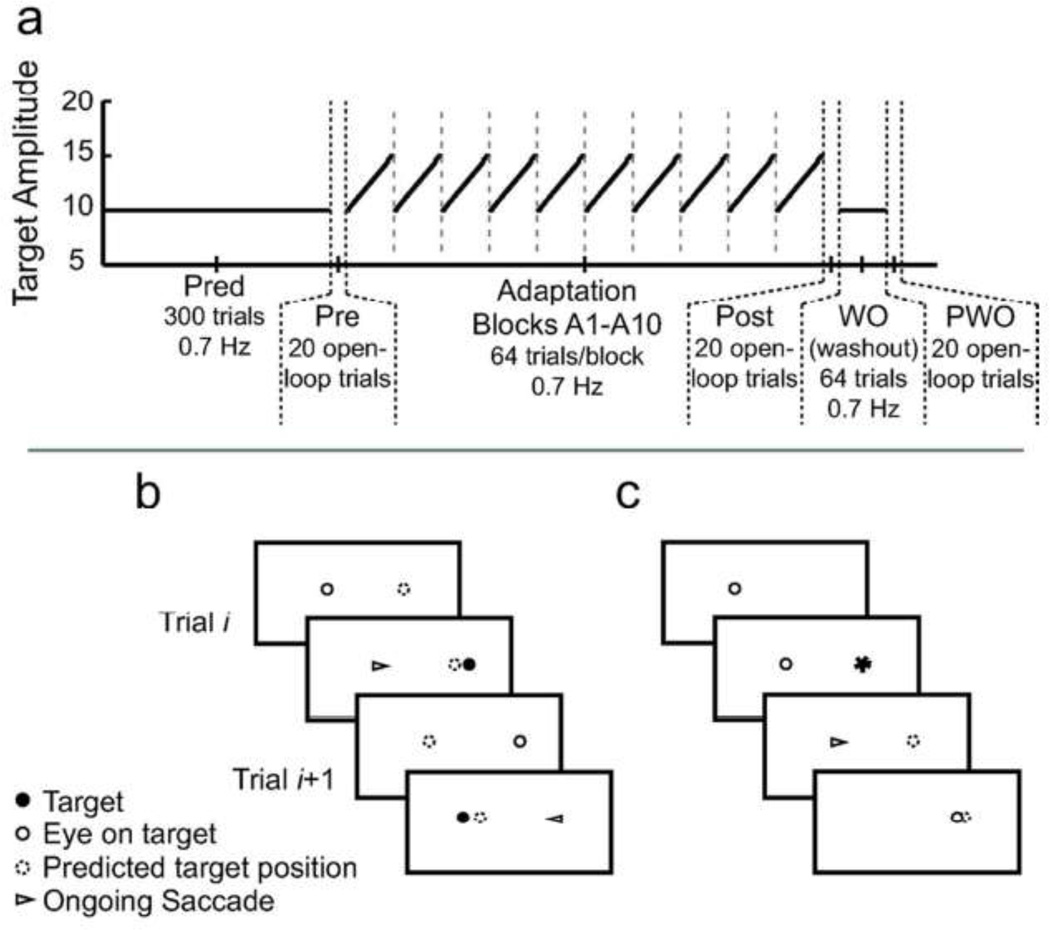Figure 1.
Experimental paradigm. a: Time course of the experiment. In the first part of the experiment, subjects executed a long block of 300 predictive saccades (Pred) at 0.7 Hz. In the adaptation portion of the experiment, saccade gain was assessed using blocks of open-loop trials (Pre, Post, and PWO). Adaptation proceeded in 10 implicit double-step blocks (A1–A10), in which target endpoints gradually stepped outward throughout the block. Washout (WO) was conducted with a single, short block of predictive saccades with fixed endpoints. Target amplitude is plotted as solid black lines; vertical dashed lines denote breaks between blocks. b: Sequence of implicit double-step adaptation trials. On each trial, subjects fixating the current target (open circle) plan a saccade to an estimated target location (dashed circle). The saccade is initiated before the target moves (triangle); however, the target actually appears at a position beyond the estimated target location (filled circle). This post-saccadic target provides error feedback about prediction accuracy. c: Target sequence for open-loop trials. Subjects fixate a target. The next target appears, allowing subjects to plan a saccade to that location; visual and predicted target positions overlap (filled dashed circle). The target is blanked upon saccade initiation; after 600 ms the target reappears at the current eye position to begin the next trial.

